MARKETING
Top 3 Strategies for Success

With the advent of e-commerce, manufacturers have unprecedented opportunities to expand their reach, streamline their operations, and enhance profitability. Amidst this digital revolution, adopting Manufacturing Execution Systems (MES) is pivotal in optimizing production processes, quality control, and resource management.
As the lines between traditional brick-and-mortar sales and online commerce continue to blur, manufacturers increasingly realize the need to adapt and thrive in this new digital landscape. This article explores the top 3 strategies manufacturers can employ to succeed in e-commerce.
Manufacturing Execution Systems (MES)
MES (Manufacturing Execution System) is specialized application software designed to solve the tasks of synchronization, coordination, analysis, and optimization of production output within any production. MES systems belong to the class of shop floor-level management systems but can also be used for integrated production management at the enterprise as a whole.
MES collects and analyzes production processes, product demand, and inventory data. This allows manufacturers to adapt more quickly to changes in the market, reconfigure production to meet current requirements, and closely monitor trends. As a result, manufacturers can more easily predict and meet customer needs, which helps increase online sales.
MES helps in maintaining accurate inventory records and managing inventory turnover. This avoids overstock or shortages, which can affect a company’s ability to meet online demand and maintain customer service levels.
Manufacturing Execution Systems (MES) enhance transparency and automate operations, reducing human errors and operational costs. Integrating Manufacturing CRM streamlines customer data, allowing manufacturers to tailor products, respond to market changes, and offer competitive prices in online stores. The synergy between MES and CRM creates an agile manufacturing environment, optimizing efficiency and customer satisfaction.
Content Marketing
Kapost’s research shows that companies in the B2B segment that blog get 67% more leads on average than companies that don’t. However, it’s worth remembering that content marketing requires a lot of resources to prepare and regularity in publishing it. This content can be, for example, brand identity and E-commerce logo, articles and videos, webinars, research, and interviews.
The content should help solve a specific problem to create the image of an expert and thus influence the decisions of potential customers. The topics discussed should not be chosen randomly. A little research in Google Trends will help select the main topic, discussion areas in the video, phrases, and words that should be included in the article. Publishing content based on such a prepared analysis allows you to achieve high positions in search engines. It provides a good user experience for customers looking for answers to product/service questions, comprehensively covering the subject matter.
The benefits of this e-commerce strategy are free traffic, increased user confidence, and the creation of an expert image.
Content marketing is a form of promotion that requires patience and time. Its effects will also depend on the quality of thecontent itself, its optimization, and promotion methods. No specific terms can be specified here.
YouTube channels as a form of content marketing
You can discuss your production process and show and test products on your YouTube channel. If someone is looking for information about a product and is unsure which brand to choose, they will likely find your video and maybe make a purchase. Remember to choose a title that matches the search query and prepare a video description with product links. You can send out an email to announce when new videos are released. Whenever you have particularly compelling videos, you could also promote them via texting notifications to drive even more traffic.
Utilize user-generated content and social media
Not utilizing the content that your users generate is a huge issue. This is because it’s not easy to refresh an e-commerce website and keep it alive. But photos and videos taken by real customers are great for this purpose.
Adding a “widget” that connects your online store’s website to its official social media accounts brings significant benefits. These include revitalizing your social media accounts, increasing your credibility as a manufacturer, inspiring other customers to buy, and encouraging repeat purchases.
Snapchat Planets
Snapchat’s “Planets” feature provides a unique and interactive way to engage with your e-commerce store’s audience. Here are some creative ideas on how to leverage Snapchat Planets to create engaging content:
- Virtual Store Tours: Use the AR feature to create a virtual tour of your store. Each planet can represent different sections or categories of your store. For instance, one planet could showcase your latest collection, another could highlight bestsellers, and another could offer exclusive deals.
- Product Launches: Announce new product launches by creating a cosmic journey. Users can travel from one planet to another, each unveiling a new product with engaging visuals and detailed descriptions. This creates a sense of excitement and discovery around new arrivals.
- Interactive Shopping Experience: Create interactive shopping experiences where users can explore products in a fun and engaging way. For example, users can navigate through different planets to find hidden discounts or special offers, making shopping more interactive and rewarding.
- Customer Rewards and Loyalty Programs: Develop a loyalty program where users earn points or rewards by exploring different planets. Each planet can offer unique rewards, such as discounts, free samples, or exclusive access to new collections. This gamifies the shopping experience and encourages repeat visits.
- Themed Campaigns: Align your marketing campaigns with planetary themes. For instance, during holiday seasons, you can create a holiday-themed planet where users can find special holiday deals, gift ideas, and festive content.
By leveraging Snapchat Planets, you can transform your e-commerce store’s content into a captivating and interactive experience that keeps your audience engaged, entertained, and coming back for more.
Use newsletters to captivate your target audience
Newsletters can strengthen the connection with the consumer and demonstrate that shopping with you is safe and profitable. Remember that the more personalized the message, the more effective it will be. It should contain a call to action (CTA), such as a button that redirects to products.
Don’t forget to put a box to check for consent to process personal data when subscribing to the newsletter. Also, add an option to unsubscribe from the newsletter in each email.
A regular email account is not adapted for the newsletter, so do not use your everyday email address. This way, you risk being blacklisted by spam filters. The benefits of newsletters are optimizing advertising costs, increasing loyal audiences from different channels, and building mutually beneficial relationships with partners.
Print and PDF Channel

In the digital landscape, the significance of Print and PDF channels cannot be underestimated for manufacturers engaging in e- commerce. The tactile experience of print offers unique psychological advantages, enhancing comprehension and retention, which are vital for technical manuals and complex product details. PDFs merge this benefit with digital accessibility, ensuring wide reach while maintaining format integrity. This dual-channel approach not only caters to diverse consumer preferences but also bolsters marketing efforts, making technical content more engaging and understandable. Utilizing catalog software further streamlines the integration of Print and PDF channels into e-commerce strategies, enhancing product presentation and distribution efficiency.
Contextual advertising: Google Ads

If you want the advertising you invest in to have an immediate effect, it’s worth turning to Google Ads. Google displays paid ads in search results and on Google’s network of partners (on-site ads in the form of banners).
You bid when you search for a keyword for which advertisers have set up a campaign. The search engine determines who will appear in the search results and at what position. When assigning bids, the quality of the landing page, the quality of the ads, and the stated maximum bid per click are all considered.
To start setting up your campaign, simply login to your Google Ads account. Using the service is free, and you’ll find plenty of online tutorials on creating a campaign. However, you may find that it won’t generate valuable traffic if you don’t set it up optimally. Your budget will be wasted on clicks that won’t lead to conversions. This is why most companies resort to the help of agencies, including specialized agencies.
There is probably no industry in which Google Ads campaigns cannot be used. However, advertising can be moderately profitable if there is a lot of competition in the industry and margins are low.
The benefits of this e-commerce strategy are large audience reach, the ability to get the target audience as accurately as possible, and very detailed statistics on results.
The effect of launching a campaign should appear almost immediately. A properly set up campaign will increase traffic to the website. By systematically optimizing the campaign, you can achieve much better results.
You also can use paid Facebook Ads post promotion. It is important to pinpoint your target group, but how do you do it? A popular way is to draw up a customer portrait, that is, to make a collective image of your customer.
This considers age, gender, income level, location, interests and hobbies, and online behavior. Such a person will display a group interested in your services or goods.
Implement personalized product selections
Recommended product block and cross-selling are very powerful internet marketing strategies. In addition to the recommended product block, which shows the analogs of the product being viewed, it is worth paying attention to the website’s functionality.
As a rule, the products in the “You may also like” block are selected based on the pages previously viewed by the customer, his previous purchases on the website, as well as what was purchased by other customers with similar tastes. If this functionality is implemented technically sound, it can lead to additional items added to the shopping cart. “You may also like” block partly acts as an alternative to the advice of a specialist or consultant.
With blocks for cross-selling related products is a similar situation. Usually, in them are placed products from the same product line, collection, or simply those that perfectly match the product being viewed. You can use AI-powered live chats to proactively engage in customer conversations and suggest products based on their behavior.
Conclusion
E-commerce for manufacturers is a vast field, and in this article, we have presented the most popular and most effective forms of selling online. Remember, no effective e-commerce strategy exists. Each industry and business will have specifics. Try combining the above mentioned e-commerce strategies to maximize your chances of success and increase your profits.
MARKETING
Why We Are Always ‘Clicking to Buy’, According to Psychologists

Amazon pillows.
MARKETING
A deeper dive into data, personalization and Copilots

Salesforce launched a collection of new, generative AI-related products at Connections in Chicago this week. They included new Einstein Copilots for marketers and merchants and Einstein Personalization.
To better understand, not only the potential impact of the new products, but the evolving Salesforce architecture, we sat down with Bobby Jania, CMO, Marketing Cloud.
Dig deeper: Salesforce piles on the Einstein Copilots
Salesforce’s evolving architecture
It’s hard to deny that Salesforce likes coming up with new names for platforms and products (what happened to Customer 360?) and this can sometimes make the observer wonder if something is brand new, or old but with a brand new name. In particular, what exactly is Einstein 1 and how is it related to Salesforce Data Cloud?
“Data Cloud is built on the Einstein 1 platform,” Jania explained. “The Einstein 1 platform is our entire Salesforce platform and that includes products like Sales Cloud, Service Cloud — that it includes the original idea of Salesforce not just being in the cloud, but being multi-tenancy.”
Data Cloud — not an acquisition, of course — was built natively on that platform. It was the first product built on Hyperforce, Salesforce’s new cloud infrastructure architecture. “Since Data Cloud was on what we now call the Einstein 1 platform from Day One, it has always natively connected to, and been able to read anything in Sales Cloud, Service Cloud [and so on]. On top of that, we can now bring in, not only structured but unstructured data.”
That’s a significant progression from the position, several years ago, when Salesforce had stitched together a platform around various acquisitions (ExactTarget, for example) that didn’t necessarily talk to each other.
“At times, what we would do is have a kind of behind-the-scenes flow where data from one product could be moved into another product,” said Jania, “but in many of those cases the data would then be in both, whereas now the data is in Data Cloud. Tableau will run natively off Data Cloud; Commerce Cloud, Service Cloud, Marketing Cloud — they’re all going to the same operational customer profile.” They’re not copying the data from Data Cloud, Jania confirmed.
Another thing to know is tit’s possible for Salesforce customers to import their own datasets into Data Cloud. “We wanted to create a federated data model,” said Jania. “If you’re using Snowflake, for example, we more or less virtually sit on your data lake. The value we add is that we will look at all your data and help you form these operational customer profiles.”
Let’s learn more about Einstein Copilot
“Copilot means that I have an assistant with me in the tool where I need to be working that contextually knows what I am trying to do and helps me at every step of the process,” Jania said.
For marketers, this might begin with a campaign brief developed with Copilot’s assistance, the identification of an audience based on the brief, and then the development of email or other content. “What’s really cool is the idea of Einstein Studio where our customers will create actions [for Copilot] that we hadn’t even thought about.”
Here’s a key insight (back to nomenclature). We reported on Copilot for markets, Copilot for merchants, Copilot for shoppers. It turns out, however, that there is just one Copilot, Einstein Copilot, and these are use cases. “There’s just one Copilot, we just add these for a little clarity; we’re going to talk about marketing use cases, about shoppers’ use cases. These are actions for the marketing use cases we built out of the box; you can build your own.”
It’s surely going to take a little time for marketers to learn to work easily with Copilot. “There’s always time for adoption,” Jania agreed. “What is directly connected with this is, this is my ninth Connections and this one has the most hands-on training that I’ve seen since 2014 — and a lot of that is getting people using Data Cloud, using these tools rather than just being given a demo.”
What’s new about Einstein Personalization
Salesforce Einstein has been around since 2016 and many of the use cases seem to have involved personalization in various forms. What’s new?
“Einstein Personalization is a real-time decision engine and it’s going to choose next-best-action, next-best-offer. What is new is that it’s a service now that runs natively on top of Data Cloud.” A lot of real-time decision engines need their own set of data that might actually be a subset of data. “Einstein Personalization is going to look holistically at a customer and recommend a next-best-action that could be natively surfaced in Service Cloud, Sales Cloud or Marketing Cloud.”
Finally, trust
One feature of the presentations at Connections was the reassurance that, although public LLMs like ChatGPT could be selected for application to customer data, none of that data would be retained by the LLMs. Is this just a matter of written agreements? No, not just that, said Jania.
“In the Einstein Trust Layer, all of the data, when it connects to an LLM, runs through our gateway. If there was a prompt that had personally identifiable information — a credit card number, an email address — at a mimum, all that is stripped out. The LLMs do not store the output; we store the output for auditing back in Salesforce. Any output that comes back through our gateway is logged in our system; it runs through a toxicity model; and only at the end do we put PII data back into the answer. There are real pieces beyond a handshake that this data is safe.”
MARKETING
Why The Sales Team Hates Your Leads (And How To Fix It)


You ask the head of marketing how the team is doing and get a giant thumbs up. 👍
“Our MQLs are up!”
“Website conversion rates are at an all-time high!”
“Email click rates have never been this good!”
But when you ask the head of sales the same question, you get the response that echoes across sales desks worldwide — the leads from marketing suck.
If you’re in this boat, you’re not alone. The issue of “leads from marketing suck” is a common situation in most organizations. In a HubSpot survey, only 9.1% of salespeople said leads they received from marketing were of very high quality.
Why do sales teams hate marketing-generated leads? And how can marketers help their sales peers fall in love with their leads?
Let’s dive into the answers to these questions. Then, I’ll give you my secret lead gen kung-fu to ensure your sales team loves their marketing leads.
Marketers Must Take Ownership
“I’ve hit the lead goal. If sales can’t close them, it’s their problem.”
How many times have you heard one of your marketers say something like this? When your teams are heavily siloed, it’s not hard to see how they get to this mindset — after all, if your marketing metrics look strong, they’ve done their part, right?
Not necessarily.
The job of a marketer is not to drive traffic or even leads. The job of the marketer is to create messaging and offers that lead to revenue. Marketing is not a 100-meter sprint — it’s a relay race. The marketing team runs the first leg and hands the baton to sales to sprint to the finish.
To make leads valuable beyond the vanity metric of watching your MQLs tick up, you need to segment and nurture them. Screen the leads to see if they meet the parameters of your ideal customer profile. If yes, nurture them to find out how close their intent is to a sale. Only then should you pass the leads to sales.
Lead Quality Control is a Bitter Pill that Works
Tighter quality control might reduce your overall MQLs. Still, it will ensure only the relevant leads go to sales, which is a win for your team and your organization.
This shift will require a mindset shift for your marketing team: instead of living and dying by the sheer number of MQLs, you need to create a collaborative culture between sales and marketing. Reinforce that “strong” marketing metrics that result in poor leads going to sales aren’t really strong at all.
When you foster this culture of collaboration and accountability, it will be easier for the marketing team to receive feedback from sales about lead quality without getting defensive.
Remember, the sales team is only holding marketing accountable so the entire organization can achieve the right results. It’s not sales vs marketing — it’s sales and marketing working together to get a great result. Nothing more, nothing less.
We’ve identified the problem and where we need to go. So, how you do you get there?
Fix #1: Focus On High ROI Marketing Activities First
What is more valuable to you:
- One more blog post for a few more views?
- One great review that prospective buyers strongly relate to?
Hopefully, you’ll choose the latter. After all, talking to customers and getting a solid testimonial can help your sales team close leads today. Current customers talking about their previous issues, the other solutions they tried, why they chose you, and the results you helped them achieve is marketing gold.
On the other hand, even the best blog content will take months to gain enough traction to impact your revenue.
Still, many marketers who say they want to prioritize customer reviews focus all their efforts on blog content and other “top of the funnel” (Awareness, Acquisition, and Activation) efforts.
The bottom half of the growth marketing funnel (Retention, Reputation, and Revenue) often gets ignored, even though it’s where you’ll find some of the highest ROI activities.


Most marketers know retaining a customer is easier than acquiring a new one. But knowing this and working with sales on retention and account expansion are two different things.
When you start focusing on retention, upselling, and expansion, your entire organization will feel it, from sales to customer success. These happier customers will increase your average account value and drive awareness through strong word of mouth, giving you one heck of a win/win.
Winning the Retention, Reputation, and Referral game also helps feed your Awareness, Acquisition, and Activation activities:
- Increasing customer retention means more dollars stay within your organization to help achieve revenue goals and fund lead gen initiatives.
- A fully functioning referral system lowers your customer acquisition cost (CAC) because these leads are already warm coming in the door.
- Case studies and reviews are powerful marketing assets for lead gen and nurture activities as they demonstrate how you’ve solved identical issues for other companies.
Remember that the bottom half of your marketing and sales funnel is just as important as the top half. After all, there’s no point pouring leads into a leaky funnel. Instead, you want to build a frictionless, powerful growth engine that brings in the right leads, nurtures them into customers, and then delights those customers to the point that they can’t help but rave about you.
So, build a strong foundation and start from the bottom up. You’ll find a better return on your investment.
Fix #2: Join Sales Calls to Better Understand Your Target Audience
You can’t market well what you don’t know how to sell.
Your sales team speaks directly to customers, understands their pain points, and knows the language they use to talk about those pains. Your marketing team needs this information to craft the perfect marketing messaging your target audience will identify with.
When marketers join sales calls or speak to existing customers, they get firsthand introductions to these pain points. Often, marketers realize that customers’ pain points and reservations are very different from those they address in their messaging.
Once you understand your ideal customers’ objections, anxieties, and pressing questions, you can create content and messaging to remove some of these reservations before the sales call. This effort removes a barrier for your sales team, resulting in more SQLs.
Fix #3: Create Collateral That Closes Deals
One-pagers, landing pages, PDFs, decks — sales collateral could be anything that helps increase the chance of closing a deal. Let me share an example from Lean Labs.
Our webinar page has a CTA form that allows visitors to talk to our team. Instead of a simple “get in touch” form, we created a drop-down segmentation based on the user’s challenge and need. This step helps the reader feel seen, gives them hope that they’ll receive real value from the interaction, and provides unique content to users based on their selection.


So, if they select I need help with crushing it on HubSpot, they’ll get a landing page with HubSpot-specific content (including a video) and a meeting scheduler.
Speaking directly to your audience’s needs and pain points through these steps dramatically increases the chances of them booking a call. Why? Because instead of trusting that a generic “expert” will be able to help them with their highly specific problem, they can see through our content and our form design that Lean Labs can solve their most pressing pain point.
Fix #4: Focus On Reviews and Create an Impact Loop
A lot of people think good marketing is expensive. You know what’s even more expensive? Bad marketing.
To get the best ROI on your marketing efforts, you need to create a marketing machine that pays for itself. When you create this machine, you need to think about two loops: the growth loop and the impact loop.


- Growth loop — Awareness ➡ Acquisition ➡ Activation ➡ Revenue ➡ Awareness: This is where most marketers start.
- Impact loop — Results ➡ Reviews ➡ Retention ➡ Referrals ➡ Results: This is where great marketers start.
Most marketers start with their growth loop and then hope that traction feeds into their impact loop. However, the reality is that starting with your impact loop is going to be far more likely to set your marketing engine up for success.
Let me share a client story to show you what this looks like in real life.
Client Story: 4X Website Leads In A Single Quarter
We partnered with a health tech startup looking to grow their website leads. One way to grow website leads is to boost organic traffic, of course, but any organic play is going to take time. If you’re playing the SEO game alone, quadrupling conversions can take up to a year or longer.
But we did it in a single quarter. Here’s how.
We realized that the startup’s demos were converting lower than industry standards. A little more digging showed us why: our client was new enough to the market that the average person didn’t trust them enough yet to want to invest in checking out a demo. So, what did we do?
We prioritized the last part of the funnel: reputation.
We ran a 5-star reputation campaign to collect reviews. Once we had the reviews we needed, we showcased them at critical parts of the website and then made sure those same reviews were posted and shown on other third-party review platforms.
Remember that reputation plays are vital, and they’re one of the plays startups often neglect at best and ignore at worst. What others say about your business is ten times more important than what you say about yourself.
By providing customer validation at critical points in the buyer journey, we were able to 4X the website leads in a single quarter!


So, when you talk to customers, always look for opportunities to drive review/referral conversations and use them in marketing collateral throughout the buyer journey.
Fix #5: Launch Phantom Offers for Higher Quality Leads
You may be reading this post thinking, okay, my lead magnets and offers might be way off the mark, but how will I get the budget to create a new one that might not even work?
It’s an age-old issue: marketing teams invest way too much time and resources into creating lead magnets that fail to generate quality leads.
One way to improve your chances of success, remain nimble, and stay aligned with your audience without breaking the bank is to create phantom offers, i.e., gauge the audience interest in your lead magnet before you create them.
For example, if you want to create a “World Security Report” for Chief Security Officers, don’t do all the research and complete the report as Step One. Instead, tease the offer to your audience before you spend time making it. Put an offer on your site asking visitors to join the waitlist for this report. Then wait and see how that phantom offer converts.
This is precisely what we did for a report by Allied Universal that ended up generating 80 conversions before its release.


The best thing about a phantom offer is that it’s a win/win scenario:
- Best case: You get conversions even before you create your lead magnet.
- Worst case: You save resources by not creating a lead magnet no one wants.
Remember, You’re On The Same Team
We’ve talked a lot about the reasons your marketing leads might suck. However, remember that it’s not all on marketers, either. At the end of the day, marketing and sales professionals are on the same team. They are not in competition with each other. They are allies working together toward a common goal.
Smaller companies — or anyone under $10M in net new revenue — shouldn’t even separate sales and marketing into different departments. These teams need to be so in sync with one another that your best bet is to align them into a single growth team, one cohesive front with a single goal: profitable customer acquisition.
Interested in learning more about the growth marketing mindset? Check out the Lean Labs Growth Playbook that’s helped 25+ B2B SaaS marketing teams plan, budget, and accelerate growth.
-

 SEO7 days ago
SEO7 days ago8 Ways To Promote Your Facebook Page Successfully
-
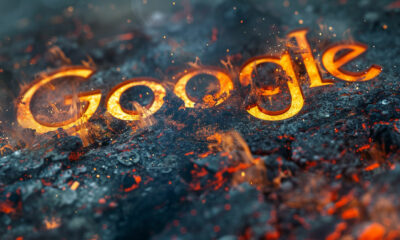
 SEARCHENGINES7 days ago
SEARCHENGINES7 days agoGoogle Search Ranking Algorithm Volatility On June 8th
-
SEARCHENGINES6 days ago
Daily Search Forum Recap: June 10, 2024
-
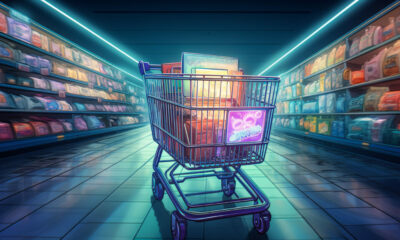
 WORDPRESS4 days ago
WORDPRESS4 days agoHow to Start a Dropshipping Business and Earn $150k/yr: A Step-by-Step Guide
-
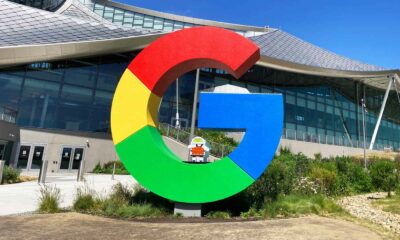
 SEO6 days ago
SEO6 days agoGoogle’s Statement About CTR And HCU
-
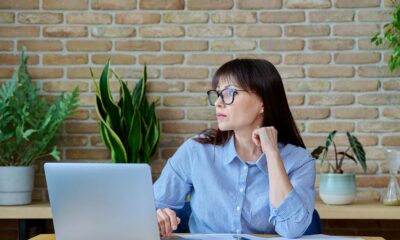
 WORDPRESS5 days ago
WORDPRESS5 days agoA Small Business Guide to Building An E-Commerce Website | CO
-

 SEO5 days ago
SEO5 days agoHow to Persuade Your Boss to Send You to Ahrefs Evolve
-
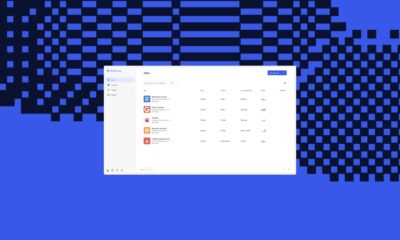
 WORDPRESS6 days ago
WORDPRESS6 days agoSay Hello to the Hosting Dashboard – WordPress.com News
















